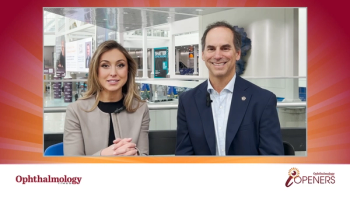
Sound fiscal knowledge vital to harmony, practice success
Working with an accountant, knowing the numbers can create order in office
It is important for physicians or practice managers to understand the finances of the office to ensure efficiency and productivity while thwarting mismanagement.
Reviewed by Gregory S. Brinton, MD
For a practice with multiple physicians to find success and profitability, everyone must be on the same page, particularly when it comes to the finances of the office.
“It takes a lot of work because they want very specific things and it may not be what you have,” he said. “You are really comparing yourself to other practices on an accurate basis.”
Dr. Gregory Brinton said benchmarking can be an invaluable tool that could allow you to track your performance and compare your practice to others. Benchmarking also can help you identify embezzlement and determine proper staffing levels, and outline collections and other trends.
It is important for physicians or practice managers understand the finances of the office. Dr. Gregory Brinton said rather than accepting the numbers your accountant offers, you should get numbers that are relevant and that tell you something about your practice. He also noted that accountants speak a “different” language, so it is important to ensure you are getting information in a format that you can understand.
“Too often, the information an accountant may provide will not provide the sort of answers that you may be looking for,” he said. “You need to negotiate to get the numbers you need to know.”
Once you are getting the right numbers, a quick review each month will take a minute or less. For example, knowing operations expenses percentage (operations over collections), can tell you what your overhead percentage is.
RELATED:
Dr. Eric Brinton noted that there are several ratios that are important to know, including the
However, Dr. Eric Brinton noted that if the percentage, generally in the 35% to 70% range, is too low, you may be hurting patient volume because you either aren’t paying for enough help or don’t have enough office space, or both. Another key metric is operating expenses per relative value unit (RVU), a measure of value used in U.S. Medicare reimbursement formula for physician services.
“If the number is high, your overhead is high relative to the number of services you are providing,” Dr. Eric Brinton said, noting the figure usually is $11 to $20.
You also can put your finger on the pulse of collections with the gross collection percentage, relative to gross charges. This will offer an efficiency measure of your collections. The average in today’s practices is 65.7%, with a range of 43% to 96%, depending on what your recorded charges are compared to Medicare or other insurance allowables.
“If you write off a lot of money because your charges are higher than Medicare allows or more than insurance pays, this number may be artificially low,” Dr. Eric Brinton said.
Another metric to consider is collections per RVU per work. This figure will be low if you contract with low-paying insurance companies or if your AR people don’t collect well.
“This is a valuable number that allows you to compare different procedures,” Dr. Gregory Brinton said. Another figure that will help you gauge staff efficiency is collections per full-time equivalent (FTE) employee, which Dr. Eric Brinton said is usually $100,000 to $150,000 for ophthalmologists.
“For a retina specialist, that number may be a little higher,” he said. “You aren’t doing refractions, which requires more skill from your employees.”
The number of FTEs per physician also can vary, depending on how much work physicians like to do themselves. The average, according to the presentation, is 6, with a range of three to 13.
“In some practices, this number may be 1:1, and they look very efficient,” Dr. Gregory Brinton said. “But they may be losing work because they can’t take on more patients.”
You also can get numbers, such as accounts receivable rations, that tell you how efficient your collections staff is. It also can help tell if staff is just writing collections off because it is easier. Ultimately, all of the figures should be reviewed monthly, or at least quarterly.
You can track the figures over time to measure the
RELATED:
One source of conflict in many offices is the method of splitting physician compensation. Physicians are faced with
Ultimately, physicians can have an office-sharing relationship where they compete against each other, or a total partnership, which encourages referrals and cooperation. Gross income can be divided equally or divided by production.
“This is the one issue that has caused partnerships to split up,” Dr. Gregory Brinton explained.
Calculating income can be done from charges or collections, and overhead can be fixed and split equally. Staff and equipment can be variable and divided according to production. The line between fixed and variable can be a hard line to draw.
“As you look at overhead costs, it is more important to decide how it effects your relationship, that to really decide if they are fixed or variable.” Dr. Gregory Brinton said.
“If you want to light a fire under doctors (encourage them to see more patients), consider all of your overhead as fixed, and divide the dollars equally. On the other hand, if you want to encourage cooperation, rather than competition, consider all of your overhead as variable, and charge it to each doctor as a percentage of income. There are, of course, many options in between.”
Money is at the root of many battles, both private and professional, and financial issues can drive a wedge in a practice if caution isn’t used.
“When it comes right down to it, it isn’t how people are paid. It is their perception of how they are paid,” Dr. Gregory Brinton concluded. “People need to feel good at the end of the day when they go home. That is more important than the numbers.”
RELATED:
Disclosures:
Gregory S. Brinton, MD
E: [email protected]
Eric P. Brinton, MD
P: 800/873-8562
This article was adapted from Dr. Gregory S. Brinton and Dr. Eric P. Brinton’s presentation at the 2018 meeting of the American Academy of Ophthalmic Executives. They have no financial interest in the subject matter.
Newsletter
Don’t miss out—get Ophthalmology Times updates on the latest clinical advancements and expert interviews, straight to your inbox.













































